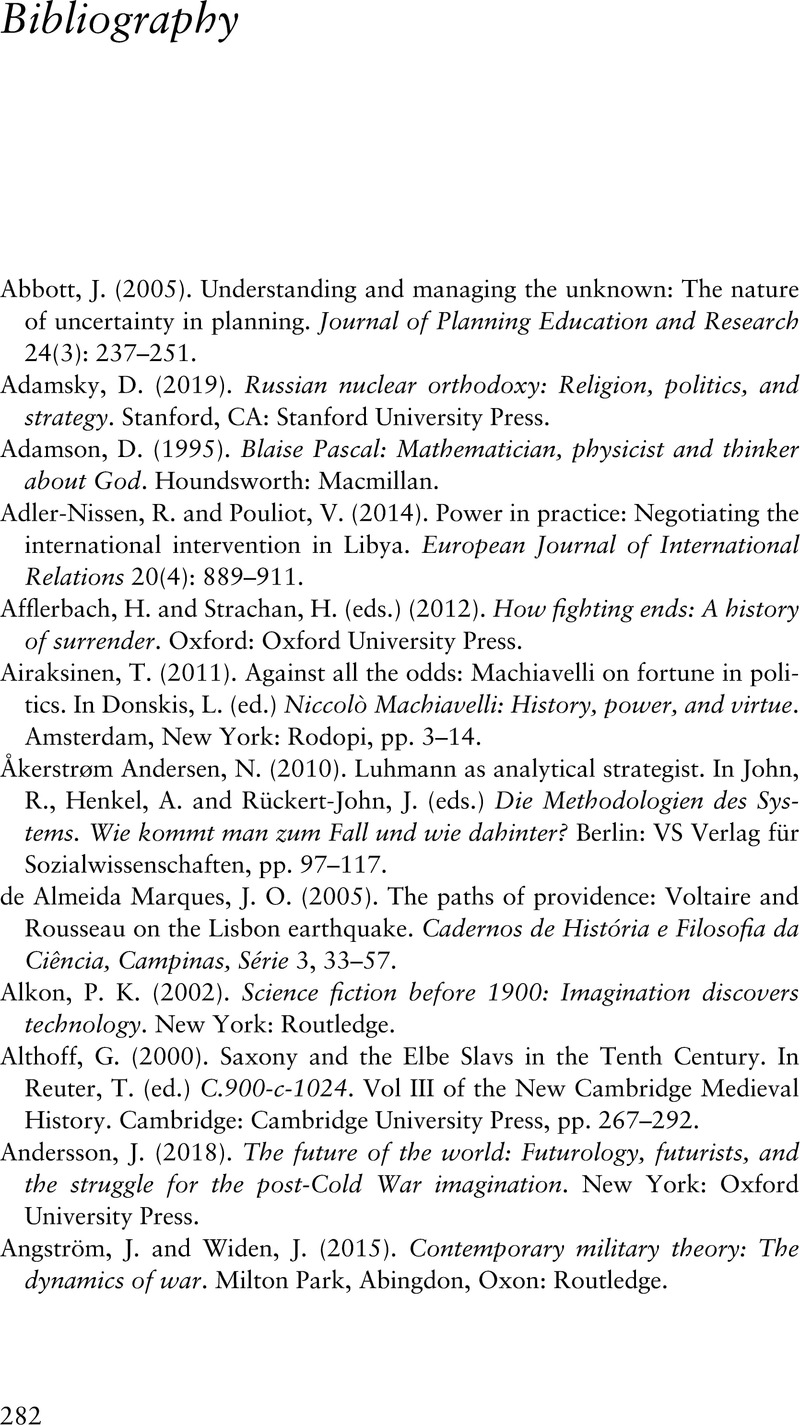Book contents
- Worlds of Uncertainty
- Worlds of Uncertainty
- Copyright page
- Contents
- Acknowledgements
- 1 Introduction
- 2 Divine Providence, History and Fortuna
- 3 Accommodations of Uncertainty (1650–1790)
- 4 The Future as Promise, Problem and Project (1790–1913)
- 5 Hubris and Trepidation (1914–1989)
- 6 Conjuring Uncertainty (1989–2022)
- 7 Conclusions
- Bibliography
- Index
- References
Bibliography
Published online by Cambridge University Press: 21 December 2023
- Worlds of Uncertainty
- Worlds of Uncertainty
- Copyright page
- Contents
- Acknowledgements
- 1 Introduction
- 2 Divine Providence, History and Fortuna
- 3 Accommodations of Uncertainty (1650–1790)
- 4 The Future as Promise, Problem and Project (1790–1913)
- 5 Hubris and Trepidation (1914–1989)
- 6 Conjuring Uncertainty (1989–2022)
- 7 Conclusions
- Bibliography
- Index
- References
Summary

- Type
- Chapter
- Information
- Worlds of UncertaintyWar, Philosophies and Projects for Order, pp. 282 - 318Publisher: Cambridge University PressPrint publication year: 2023

